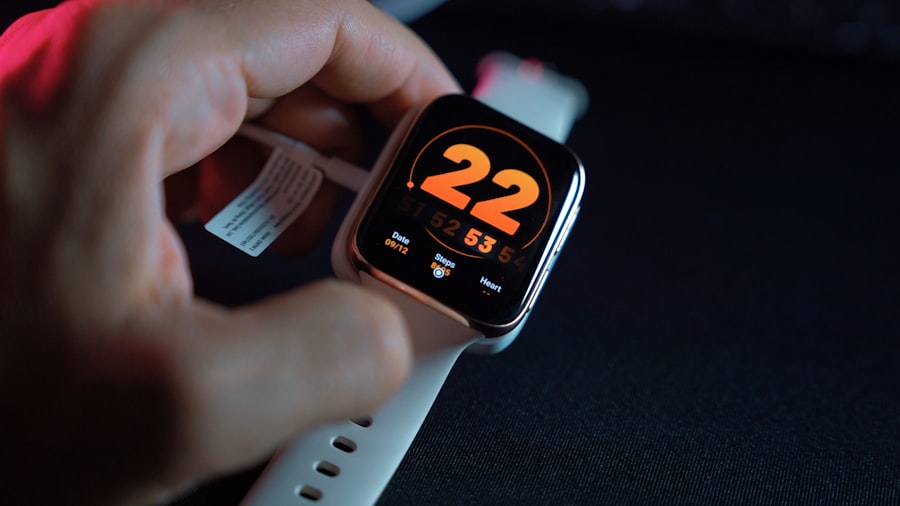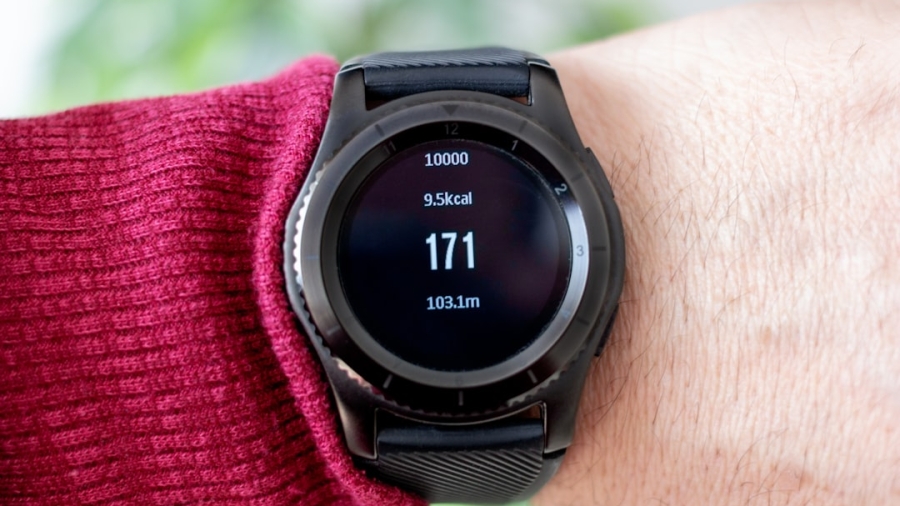The emergence of the COVID-19 pandemic has catalyzed a significant shift in how we approach health monitoring and disease detection. Wearable technology, which encompasses devices such as smartwatches, fitness trackers, and health monitors, has gained unprecedented attention as a potential tool in the fight against this global health crisis. These devices, traditionally used for fitness tracking and health monitoring, have evolved to incorporate advanced sensors and algorithms capable of detecting early signs of illness.
As the world grapples with the ongoing challenges posed by COVID-19, the integration of wearable tech into public health strategies has become increasingly relevant, offering a promising avenue for enhancing our ability to monitor and respond to the virus. The role of wearable technology in COVID-19 detection and monitoring is multifaceted. On one hand, these devices can provide real-time data on vital signs such as heart rate, temperature, and oxygen saturation levels, which are critical indicators of respiratory illnesses.
On the other hand, they can also facilitate contact tracing and symptom tracking, enabling users to report their health status and receive timely alerts about potential exposure to the virus. As researchers and healthcare professionals continue to explore innovative solutions to combat COVID-19, wearable tech stands out as a valuable asset that can empower individuals and communities to take proactive measures in safeguarding their health.
Key Takeaways
- Wearable tech has emerged as a valuable tool in the fight against COVID-19, offering the potential for early detection and monitoring of the virus.
- Early detection and monitoring are crucial in controlling the spread of COVID-19, and wearable tech can play a significant role in achieving this goal.
- Wearable tech, such as smartwatches and fitness trackers, can aid in early detection and monitoring of COVID-19 through continuous health monitoring and symptom tracking.
- Various types of wearable tech, including temperature monitoring devices and pulse oximeters, are available for COVID-19 detection and monitoring, offering diverse options for individuals and healthcare professionals.
- Despite its potential benefits, wearable tech for COVID-19 detection and monitoring may face challenges and limitations, such as accuracy, accessibility, and user compliance.
The Importance of Early Detection and Monitoring in Controlling the Spread of COVID-19
Protecting Vulnerable Populations and Healthcare Systems
This proactive approach not only helps protect vulnerable populations but also alleviates pressure on hospitals and healthcare workers who are often overwhelmed during surges in cases. Moreover, continuous monitoring of individuals’ health can lead to timely interventions that may prevent severe illness or hospitalization.
The Role of Wearable Devices in Early Detection
For instance, wearable devices that track physiological parameters can alert users to concerning changes in their health status, prompting them to seek medical advice sooner rather than later. This early intervention can be particularly beneficial for high-risk groups, such as the elderly or those with pre-existing conditions, who may experience more severe symptoms if infected.
Building a Resilient Public Health Infrastructure
By prioritizing early detection and monitoring, we can create a more resilient public health infrastructure capable of responding effectively to future outbreaks.
How Wearable Tech Can Aid in Early Detection and Monitoring of COVID-19

Wearable technology has the potential to revolutionize how we detect and monitor COVID-19 by providing continuous, real-time data that can inform both individual health decisions and broader public health strategies. These devices can track a variety of physiological metrics that are indicative of viral infection. For example, changes in body temperature, heart rate variability, and respiratory rate can signal the onset of illness before more severe symptoms manifest.
By leveraging machine learning algorithms, wearable tech can analyze this data to identify patterns that may suggest an increased risk of infection, allowing users to take precautionary measures or seek medical attention promptly. In addition to physiological monitoring, wearable devices can facilitate symptom tracking and contact tracing efforts. Many wearables are equipped with GPS capabilities that can help users log their movements and interactions with others.
This information can be invaluable for public health officials attempting to trace potential exposure routes during an outbreak. Furthermore, some wearables allow users to input symptoms directly into an app, creating a comprehensive health profile that can be shared with healthcare providers. This integration of data not only enhances individual awareness but also contributes to a larger dataset that can inform public health responses and resource allocation.
Types of Wearable Tech Available for COVID-19 Detection and Monitoring
The market for wearable technology has expanded significantly in recent years, leading to a diverse array of devices designed for health monitoring and disease detection. Smartwatches from major brands like Apple and Fitbit now come equipped with advanced sensors capable of measuring heart rate, blood oxygen levels, and even electrocardiograms (ECGs). These features make them particularly useful for monitoring potential COVID-19 symptoms.
Additionally, some companies have developed specialized wearables specifically aimed at detecting early signs of respiratory illnesses through continuous monitoring of vital signs. Beyond smartwatches, other types of wearable tech are also making strides in COVID-19 detection and monitoring. Fitness trackers remain popular for their ability to monitor physical activity levels and sleep patterns while providing insights into overall health.
Moreover, emerging technologies such as smart clothing embedded with sensors can track physiological metrics in real-time without requiring users to wear additional devices. These innovations represent a growing trend toward integrating health monitoring seamlessly into daily life, making it easier for individuals to stay informed about their health status.
The Potential Challenges and Limitations of Wearable Tech in COVID-19 Detection and Monitoring
Despite the promising potential of wearable technology in combating COVID-19, several challenges and limitations must be addressed for these devices to be fully effective. One significant concern is the accuracy and reliability of the data collected by wearables. While many devices are designed with advanced sensors, variations in individual physiology can lead to discrepancies in readings.
For instance, factors such as skin temperature fluctuations or improper device fit can affect heart rate or temperature measurements. Ensuring that these devices provide accurate data is essential for building trust among users and healthcare providers alike. Another challenge lies in the widespread adoption of wearable technology.
While many individuals own smartphones or smartwatches, not everyone has access to these devices or is willing to use them for health monitoring purposes. This disparity raises questions about equity in public health initiatives; marginalized communities may be less likely to benefit from wearable tech solutions due to socioeconomic barriers. Additionally, there is a risk that reliance on technology could lead to complacency regarding traditional public health measures such as social distancing and mask-wearing.
Addressing these challenges will require collaboration between technology developers, healthcare professionals, and policymakers to ensure that wearable tech is accessible, reliable, and effectively integrated into broader public health strategies.
The Role of Data Privacy and Security in Wearable Tech for COVID-19 Detection and Monitoring

As wearable technology becomes increasingly integrated into our daily lives, concerns surrounding data privacy and security have emerged as critical issues. Wearable devices collect vast amounts of personal health data, which raises questions about how this information is stored, shared, and protected from unauthorized access. Users must trust that their sensitive health information will not be misused or exposed to third parties without their consent.
This trust is essential for encouraging widespread adoption of wearable tech for COVID-19 detection and monitoring. To address these concerns, manufacturers must prioritize robust security measures when designing wearable devices and associated applications. This includes implementing encryption protocols for data transmission, ensuring secure storage solutions for sensitive information, and providing users with clear privacy policies outlining how their data will be used.
Additionally, regulatory frameworks may need to evolve to establish guidelines for data protection specific to wearable technology in healthcare contexts. By fostering a culture of transparency and accountability around data privacy, we can enhance user confidence in wearable tech while maximizing its potential benefits in the fight against COVID-19.
The Future of Wearable Tech in COVID-19 Detection and Monitoring
Looking ahead, the future of wearable technology in COVID-19 detection and monitoring appears promising yet complex. As advancements in sensor technology continue to evolve, we can expect even more sophisticated devices capable of providing comprehensive health insights. For instance, future wearables may incorporate artificial intelligence algorithms that not only analyze real-time data but also predict potential health issues based on historical trends.
This predictive capability could enable users to take proactive steps toward maintaining their health before symptoms even arise. Moreover, the integration of wearable tech into broader healthcare ecosystems presents exciting opportunities for improving public health responses. By connecting wearables with telehealth platforms or electronic health records (EHRs), healthcare providers could gain access to continuous streams of patient data that inform treatment decisions and resource allocation during outbreaks.
However, realizing this vision will require collaboration among technology developers, healthcare professionals, policymakers, and regulatory bodies to ensure that wearable tech is effectively integrated into existing healthcare frameworks while addressing concerns related to privacy and security.
The Impact of Wearable Tech on the Fight Against COVID-19
In conclusion, wearable technology has emerged as a powerful tool in the ongoing battle against COVID-19 by facilitating early detection and continuous monitoring of health metrics. The ability to track vital signs in real-time empowers individuals to take charge of their health while providing valuable data that can inform public health strategies aimed at controlling the spread of the virus. Despite challenges related to accuracy, accessibility, and data privacy, the potential benefits of integrating wearable tech into our healthcare systems are significant.
As we move forward into an era where technology plays an increasingly central role in our lives, it is essential that we harness the capabilities of wearable devices responsibly and ethically. By prioritizing user trust through robust security measures and fostering collaboration among stakeholders across sectors, we can maximize the impact of wearable tech on public health initiatives aimed at combating COVID-19 and future pandemics alike. Ultimately, the integration of these innovative technologies into our daily lives holds the promise of not only enhancing individual well-being but also strengthening our collective resilience against emerging health threats.
For those interested in the intersection of technology and health, particularly in the context of the COVID-19 pandemic, exploring the capabilities of smartwatches in health monitoring can be quite enlightening. A related article that delves into the latest advancements in smartwatch applications, including those that could potentially assist in detecting and monitoring health conditions such as COVID-19, can be found here: The Best Smartwatch Apps of 2023. This article provides insights into how these applications leverage wearable technology to enhance user health and wellness, which is crucial during times of health crises.
FAQs
What is wearable tech?
Wearable tech refers to electronic devices that can be worn on the body, such as smartwatches, fitness trackers, and other devices that can monitor health and activity.
How can wearable tech help in COVID-19 detection and monitoring?
Wearable tech can help in COVID-19 detection and monitoring by tracking vital signs such as body temperature, heart rate, and respiratory rate, which can provide early indications of potential infection.
What are some examples of wearable tech being used for COVID-19 detection and monitoring?
Examples of wearable tech being used for COVID-19 detection and monitoring include smartwatches and fitness trackers that have been equipped with sensors to track changes in vital signs and detect potential symptoms of COVID-19.
What are the benefits of using wearable tech for COVID-19 detection and monitoring?
The benefits of using wearable tech for COVID-19 detection and monitoring include early detection of potential infection, continuous monitoring of vital signs, and the ability to track and analyze data over time to identify patterns and trends.
Are there any limitations or challenges associated with using wearable tech for COVID-19 detection and monitoring?
Some limitations and challenges associated with using wearable tech for COVID-19 detection and monitoring include the need for accurate and reliable sensors, privacy concerns related to the collection and storage of personal health data, and the potential for false alarms or inaccurate readings.

